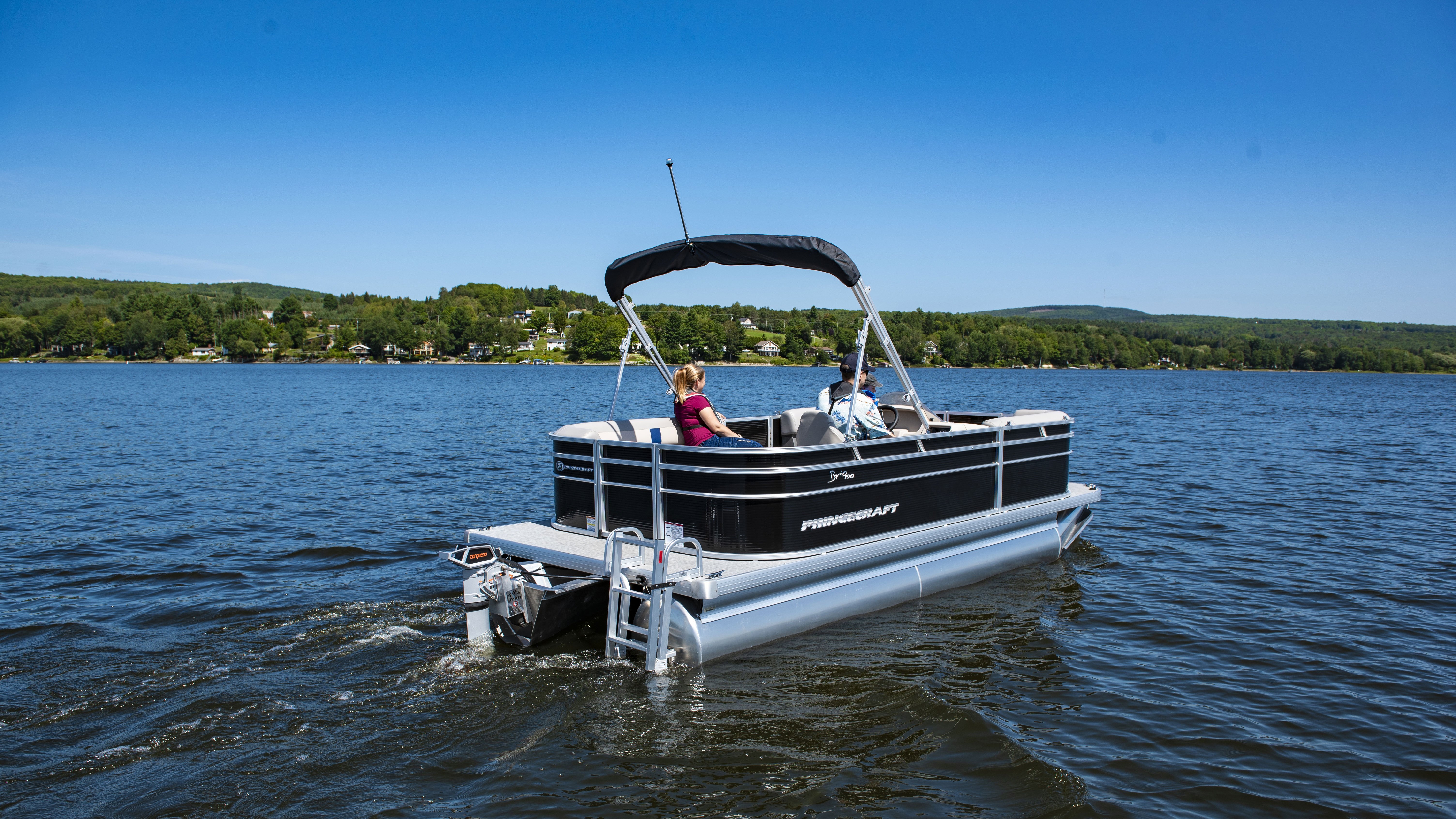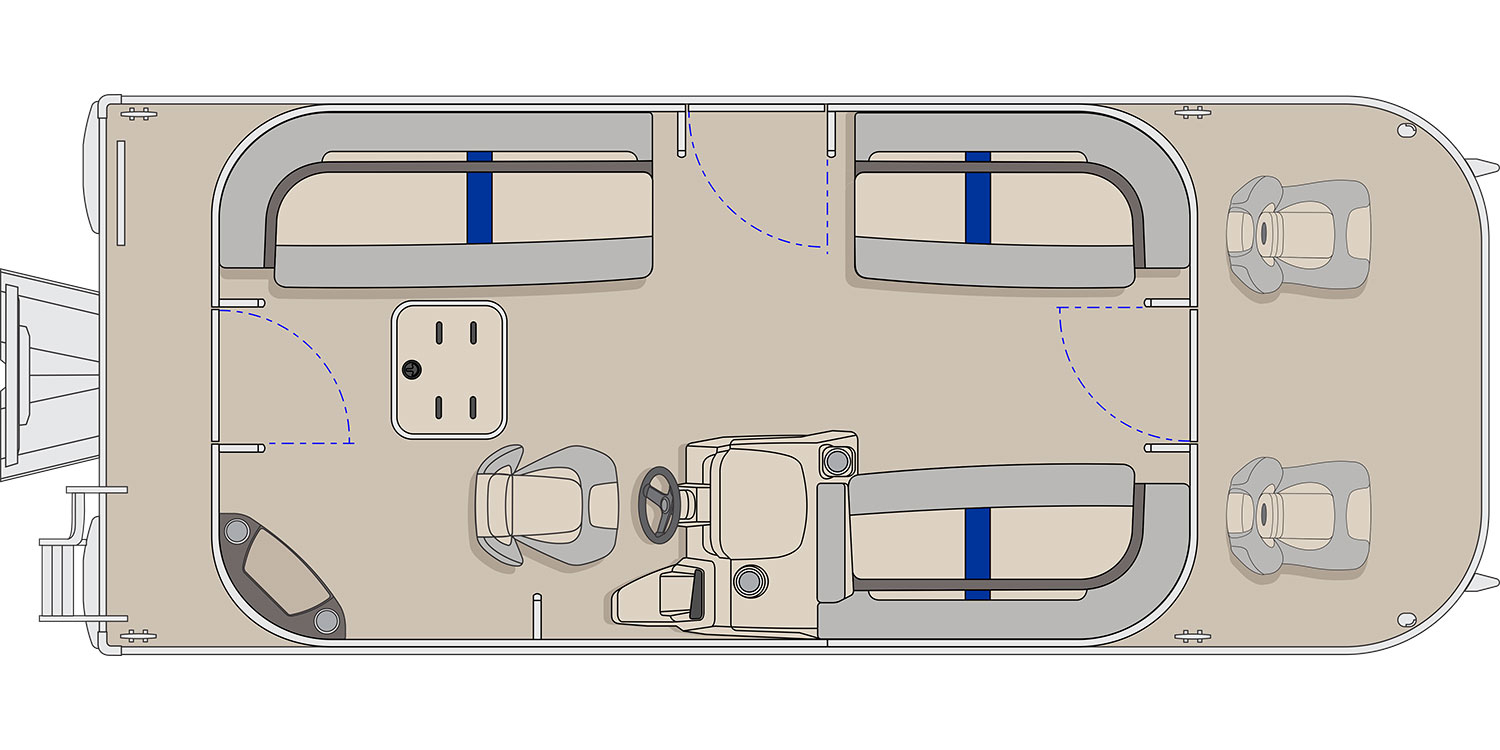


For 60 years, Princecraft has been building rugged, high-performance aluminium pontoon boats to explore the lakes and rivers of North America. The new Brio 2.0 electric pontoon boat series with Torqeedo propulsion systems and optional solar panel recharging ensures you can enjoy the great outdoors without doing it any harm.
A boat is intended to transport passengers from A to B. From one riverbank to another, from a town to a small island, or out to sea to do a job. But that's only half the truth. You want to enjoy your time on the water, too. pontoon boats are a wildly popular way to enjoy inland waters with their spacious layout and family-friendly designs – and if they’re powered by a quiet, emission-free electric motor you’re up for a perfect day.
Canadian boatbuilder Princecraft Boats has been designing aluminium boats for 60 years and is always focused on finding the perfect balance of performance and comfort. "We wanted to give our customers a more sustainable option," says Jean-Phillippe Martin-Dubois, Princecraft’s Marketing and Customer Experience Director. "But of course, it shouldn't make the experience on the water any less luxurious." Ten years ago, Princecraft first launched a pontoon boat that was specifically designed by their Research & Development Department for electric propulsion. Torqeedo supplied the drive systems.
More power, more silence
Now, Princecraft Boats and the world leader in electric mobility on the water are collaborating again to launch the Brio 2.0 series powered by Torqeedo Cruise motors.
Pontoon boats are perfect for electric propulsion. Not only can they be used in particularly shallow waters thanks to their shallow draft; they also produce less drag, which increases range. It also means you can enjoy the torque and maneuverability of Torqeedo Cruise motors. "Turns on a dime," as they say.
Cruise motors are perfect for pontoon boats and other applications
Solar panels increase the electric motor’s range
"The more powerful the motorization and the higher the range, the more electric pontoon boats we will see," says Jean-Philippe Martin-Dubois, who goes on to explain that the boatbuilder will continue to expand and improve their range of zero-emission boats. The Brio 2.0 series is designed to maximise range and performance with its lightweight aluminium construction. The redesigned battery box(es) can accommodate two 24 V batteries or one 48 V Torqeedo lithium battery. The optional solar panels recharge the batteries while the boat is on the water. After all, North American waters are not only beautiful, as we all know; they are also big.
"At Princecraft, we want to create unique experiences on the water for both avid anglers and recreational boaters," Jean-Philippe adds. Relaxation is often more important than top speed. The noiseless electric drive guarantees Brio 2.0 passengers even more peace and quiet on the water.
Batteries, boat size, engine equipment – the exact configuration can be precisely tailored to the boat owner's needs thanks to Brio 2.0's modular system. Which body of water am I traveling on? How much time do I want to spend on the water? The pontoon boats come in three lengths ranging from 17 to 21 feet, and the power ratings of the Torqeedo Cruise motors range from 6 to 25 HP-equivalent. “On average, our pontoons reach 8 to 9 mph,” Jean-Philippe says. "With the biggest engine, we can reach a maximum of 13 mph, which is enough for a nice spin on the lake while enjoying the surroundings."

A boat as a private island. Pontoons offer plenty of space for customisations like angler seats (front). Credit Princecraft
For decades, Princecraft Boats has been disproving the stereotype of pontoon boats being stolid and a bit boring. After all, the boatbuilder's customers are out on North America’s endlessly beautiful waters. Social media is rife with testimonials from users who have taken these rugged, efficient aluminium boats up to the Yukon and even farther north. Now Princecraft customers can enjoy nature without harming it through CO2 emissions and polluting waters through diesel and oil spillage.
Room for ideas
The large deck area on the pontoon boats offers passengers all kinds of opportunities. The Brio 2.0, for example, comes with a swim platform at the stern and two folding fishing seats at the bow. It also has a rotating driver's seat and a chaise lounge with storage space. Anglers can convert a receptacle at the stern into a fish holding tank and connect a pump to it. Princecraft even offers an optional BBQ gas grill that can be fixed on deck – and there is plenty of room for other ideas as well.
No one is likely to use their little electric island like anyone else does. But that's also the beauty of a boat – you’re the master of your own little world.
Princecraft is a Canadian manufacturer of aluminium pontoon, fishing and deck boats that has been dedicated to providing fishing and boating enthusiasts with an unparalleled experience on the water since 1954. Since 2010, the company has partnered with Torqeedo to develop all-electric pontoon boats, which it sells primarily in the North American market.
More information:
Find high-resolution pictures at the: › Torqeedo Dropbox
Find the main catalogue 2022 here: › Main Catalogue 2022
Find the professional catalogue 2022 here: › Professional Catalogue 2022
Related Torqeedo Product
Good conscience, good feeling
- Motorboats
- Big Picture


